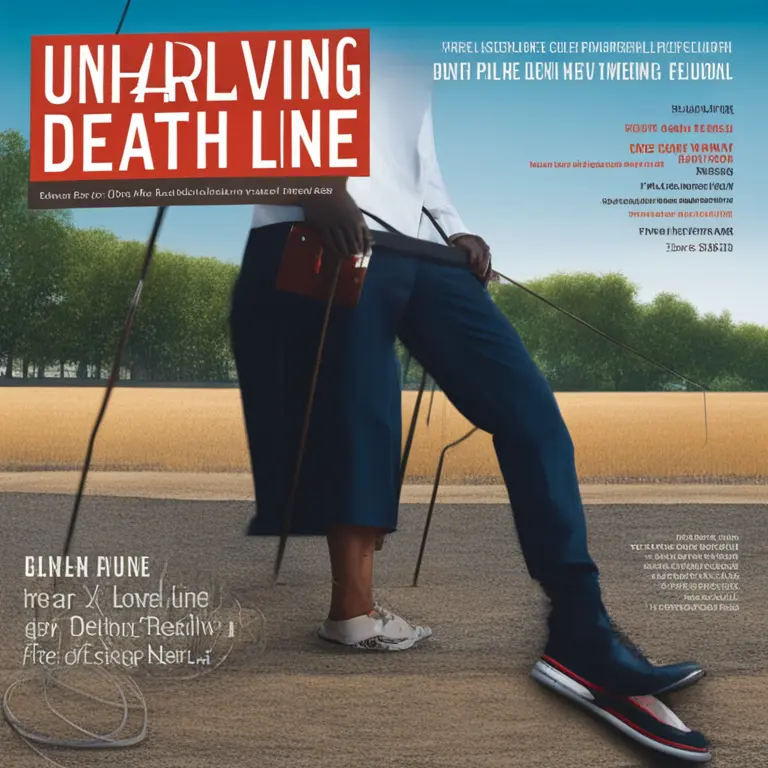
The Palmistry Death Line: Myths and Meanings
Delve into the mysterious palmistry death line and uncover its truths and misconceptions in the art of palm reading.
article by Nora Pennington
Palmistry's Mysterious Line
Palmistry, or chiromancy, is the ancient art of reading one's destiny and character through the study of the palm. Practiced across civilizations, it has intrigued many with its potential to reveal life's trajectories. Among the various lines observed by palmists, one that frequently captures attention is the so-called 'death line.' Contrary to ominous assumptions, this line does not predict death but rather signifies transformative life events or potential health-related issues, depending on its appearance and location on the palm.

Unraveling the 'Death Line'
Traditionally, in palmistry, the death line is not a standalone marker. It is often identified as a branch or offshoot of other lines, usually the Life Line or the Head Line, creating confusion and anxiety for those unfamiliar with chiromancy. However, seasoned palm readers interpret this line with caution and context, avoiding fatalistic predictions as the line's interpretation is flexible and influenced by the combination of all the palm's features.

Interpreting Variations
When encountering a death line, a palmist looks at aspects such as length, depth, and clarity. A short, shallow line could denote a minor incident or change, while a deep, long line might suggest a more significant life alteration. Breaks in the line are often associated with unexpected changes or disruptions. It is crucial to note that within palmistry, interpretations can vary greatly and the conclusions come from considering the entirety of one's hand, not just a single line.

Contours of Misconception
The fear surrounding the death line can be attributed to misconceptions and mythologies that have historically surrounded the practice of palmistry. The mislabeling of this line has led to undue dread, casting a shadow over an otherwise enlightening and reflective process. It is essential for modern practitioners to communicate effectively, dissolving fears and emphasizing the positive aspects of self-awareness that palm reading can invoke.

Modern Palmistry Perspectives
In 2024, palmistry is honored not only as a traditional practice but also as a form of personal insight and development tool. With growing acceptance of diverse spiritual and self-help practices, the focus has shifted from fatalistic divinations to empowerment and self-discovery. Contemporary palm readers emphasize personal growth, decoding the death line more as a sign of transformation, rather than an omen of literal demise.
Embracing Change and Potential
The presence of a death line on the palm can inspire a proactive approach to health and life choices. Instead of fostering fear, an informed reading could encourage individuals to take charge of their lives, seek medical advice if necessary, and make positive lifestyle adjustments. In this way, the death line could be seen as an ally, prompting mindfulness and care for one's well-being.
Conclusions and New Directions
In conclusion, the palmistry death line symbolizes much more than its name implies. This enigmatic line should be understood as a cue to personal transformation and a marker that suggests the significance of change in one's life. As we continue to embrace the evolutions of palmistry, it becomes a vehicle for introspection, and the death line transforms from a symbol of fear to one of fascinating potential.
Published: 1/29/2024
Modified: 1/29/2024
More predictions
Come back here soon to learn more about yourself and your future


The Significance of Vertical Lines in Palmistry
Discover how vertical lines on the fingers relate to personal qualities and potential life paths in the practice of palmistry.


Palmistry: The Significance of Vertical Lines
Discover the meaning behind the vertical lines on your fingers with our insightful palmistry guide, revealing aspects of your character and destiny.


The Secrets Hidden in Your Palm's Health Line
Discover the significance of the health line in palmistry and how it may offer insights into your well-being and vitality.